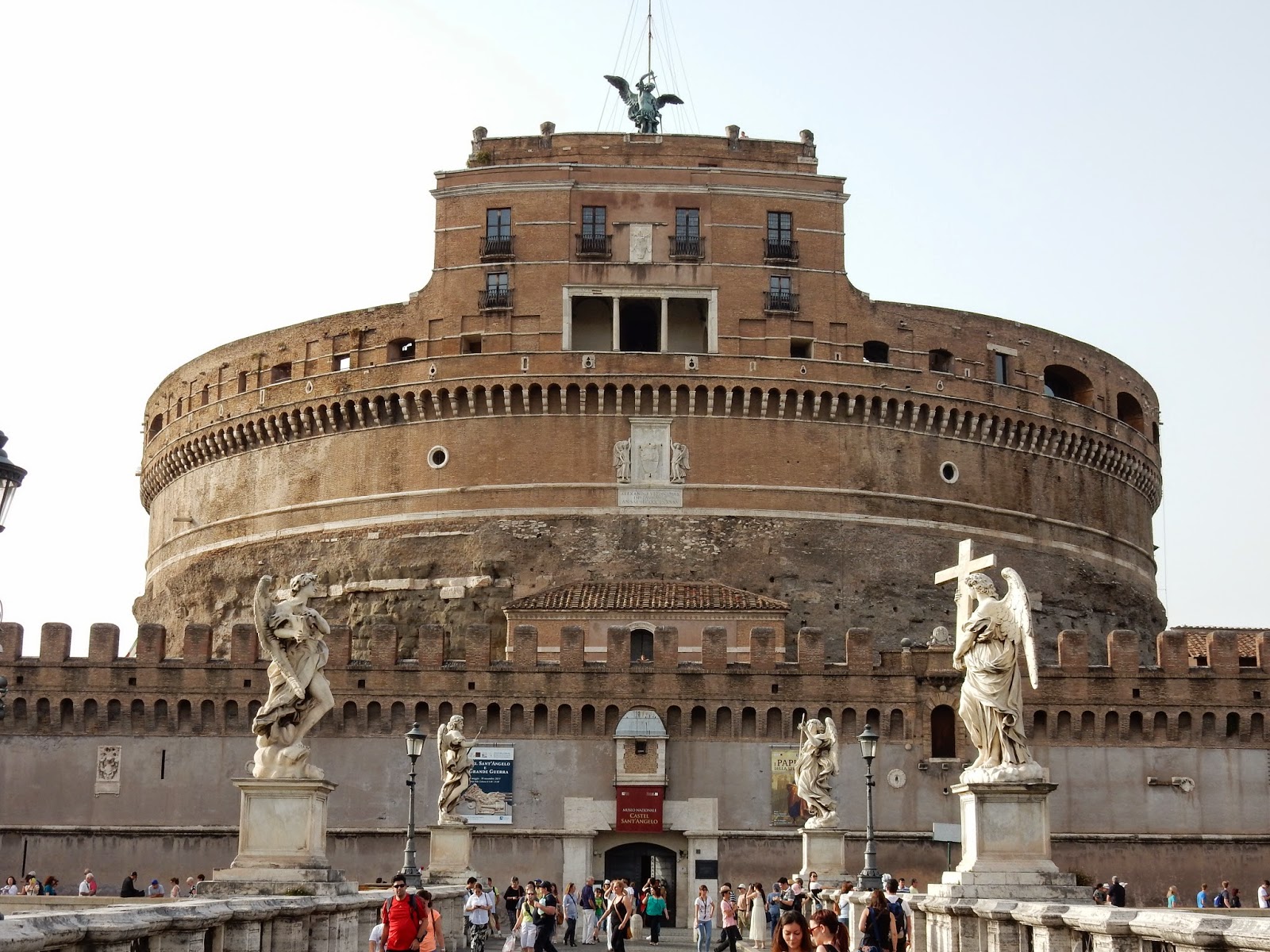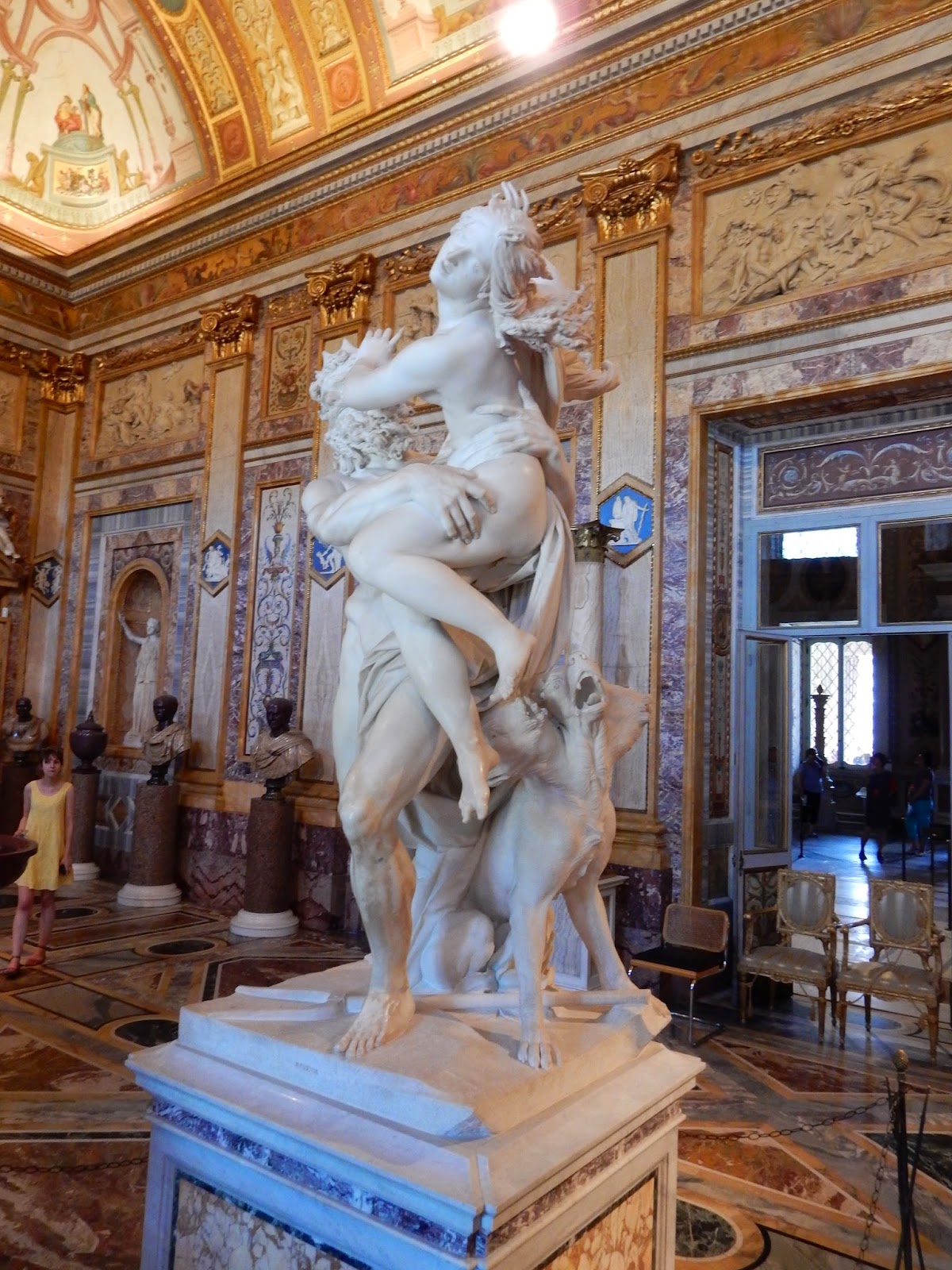Day 17 marked the first day of full class with Fr. Bergin presiding. All went well!
After lunch, we met at the villa and got on a nearby bus to the Villa Borghese.
This garden area was owned by the Borghese family, a famously rich Roman family. In particular, the villa was used as a sort of getaway location for the family where they could escape the noise and heat of the city and entertain guests. Over the years, the family collected various pieces of famous art in various ways, some less righteous than others. The result is an impressive private art collection of some true masterpieces.
 |
| Villa Borghese, Galleria Borghese |
The entire first floor could simply be renamed the Bernini Floor and no one would think twice about it. One thing is for certain - the family loved Bernini. Many of his sculptures are here, some commissioned by the family and others taken by the family.
 |
| Bernini's Pluto and Proserpina |
 |
| Bernini's Aeneas, Anchises, and Ascanius |
Some Caravaggios were tossed in as well.
 |
| Caravaggio's St. Jerome |
 |
| Caravaggio's Boy with a Basket of Fruit |
 |
| Bernini's David |
 |
| Bernini's Apollo and Daphne |
 |
| Bernini's Self Portrait |
 |
| Raphael's Girl with a Unicorn, which may have used Lucrezia Borgia as a model |
 |
| Copy of Raphael's Julius II, a papal painting of Giuliano della Rovere, or Pope Julius II |
 |
| Just a tiny little piece of the immense garden of the villa |
Following our gallery tour, we had a bunch of free time before our group dinner. I decided I would make a bit of a trek to the Tiber once again. This time, however, I was on a mission to see the Castel Sant'Angelo. This site was never on any itinerary for the course as it deals with more or less a relatively small section of papal history. That being said, the papal history that it does deal with just so happens to be the Borgia papacy time period. The castle was used as a hiding place and a fortress during times when Rome or St. Peters was in danger. For these reasons, I made it my personal mission to go there.
 |
The only marking of Alexander VI's that I have seen in Rome. He used the castle for a time,
one of the few things that he altered during his papacy that still is around today |


The way that popes made it between St. Peters and Castel Sant'Angelo without threat was not through the streets but above them. "Il Passetto" is a passageway that leads from the Vatican to the castle, which runs above the street on a structure very reminiscent of Roman aqueducts. This passageway was also featured in Angels and Demons, so seeing it was cool (though walking it is not allowed).
 |
| A sign pointing to Il Passetto |
 |
| Il Passetto extending from the castle towards Vatican City and St. Peters |
It was only 7 euro to tour the entire place, and it was well worth it - I spent the better part of an hour and a half in there. Much of that time I spent at the top, where you can get yet another good view of much of Rome, just at a different angle.
 |
| Panorama with St. Peters in the cetner |
 |
| Me with the Vatican in the background |
 |
| Overlooking the Ponte dei Angeli |
 |
| St. Michael the Archangel atop the castle |
 |
| The coat of arms of Pope Alexander VI. Note the bull on the left, the symbol of the Borgia family |
 |
| Piazza di Alexander VI |
 |
| The entrance to Il Passetto |
On my way back from the Castel, I passed two more churches that I was interested in seeing. The first was the Basilica of San Lorenzo in Damaso. This church sits on land that is owned by the Vatican, in a similar way to St. John Lateran and Paul Outside the Walls.
Just down the street from San Lorenzo was a church that I had at least a bit of interest in. This was the Basilica of Sant'Andrea della Valle, dedicated to St. Andrew the Apostle.
My interest in this church was due to the tomb of Pius III, also known as Cardinal Piccolomini. As I've said before, the Piccolomini family is yet another great Italian family. This cardinal was elected pope following the death of Pope Alexander VI, but he only lived for about a month before passing away. The following conclave elected Giuliano della Rovere, Pope Alexander's "nemesis", as the successor. Though Pius III did almost nothing important in his month long reign, seeing him ties everything together nicely.
As I walked to where I was to meet everyone for dinner, I came upon the Vittoriano, where a large television screen was set up to show the Italy World Cup game. Every soccer fan in Rome was at this (including some of our group members). I snapped some pictures to give you a sense of the numbers.
We met up with Fr. Bergin for a dinner of pizza in a place that was sort of off the beaten path. The food was great, as per the usual Roman meal out.
Tomorrow, we will have a papal audience at St. Peters, and will be touring Jesuit churches and the rooms of St. Ignatius of Loyola.
Thus ends the 17th day.




















































No comments:
Post a Comment